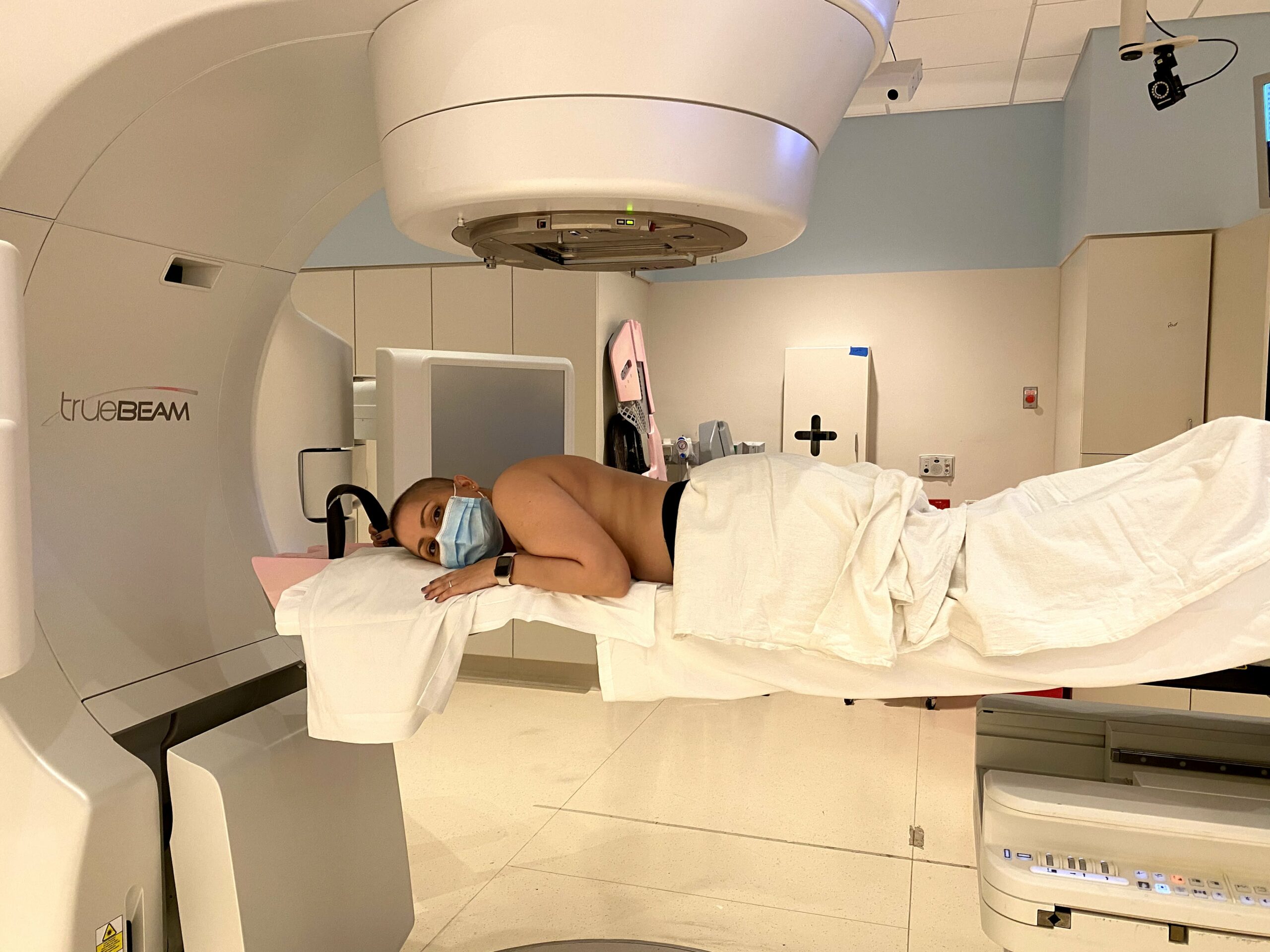Imagine all the stress, anxiety and unknowns you faced during the pandemic. Now, add a cancer diagnosis to that. How do you handle it? What do you do when the world is shut down?
That’s just what happened to Suzette Andaya-Gomez, 42, who found a lump in her breast during a self-breast exam in the shower. Immediately, Andaya-Gomez went into action, her first thought was “How do we fix this? I immediately wanted to know more about the specifics of my diagnosis and what were the next steps to ‘fix’ me.”
Her diagnosis came rather quickly, as she recalls, “Unlike most people, my diagnosis came rather quickly. I was told I had breast cancer by the radiologist who read my ultrasound. Right after having the ultrasound and before even having a biopsy. Typically, you have a biopsy first, but in my case, the radiologist seemed certain that I had breast cancer and told me on the spot.”
Sharing the News & Action Plans
Right after she had her diagnosis, she first shared the news with her husband, and he “jumped right on board on team ‘Let’s fix this.’ He immediately researched the specifics of my tumor. Together we came up with a dietary plan that was geared to starve cancer and help save my life,“ she says.
She also shared this news with a few friends. “This diagnosis quickly shed a spotlight on who my true friends are, you know, the ones that will be there for you for more than a good party. The ones that were very supportive, positive, eager to help in any way possible and always saw me beating this at the end,” says Andaya-Gomez.
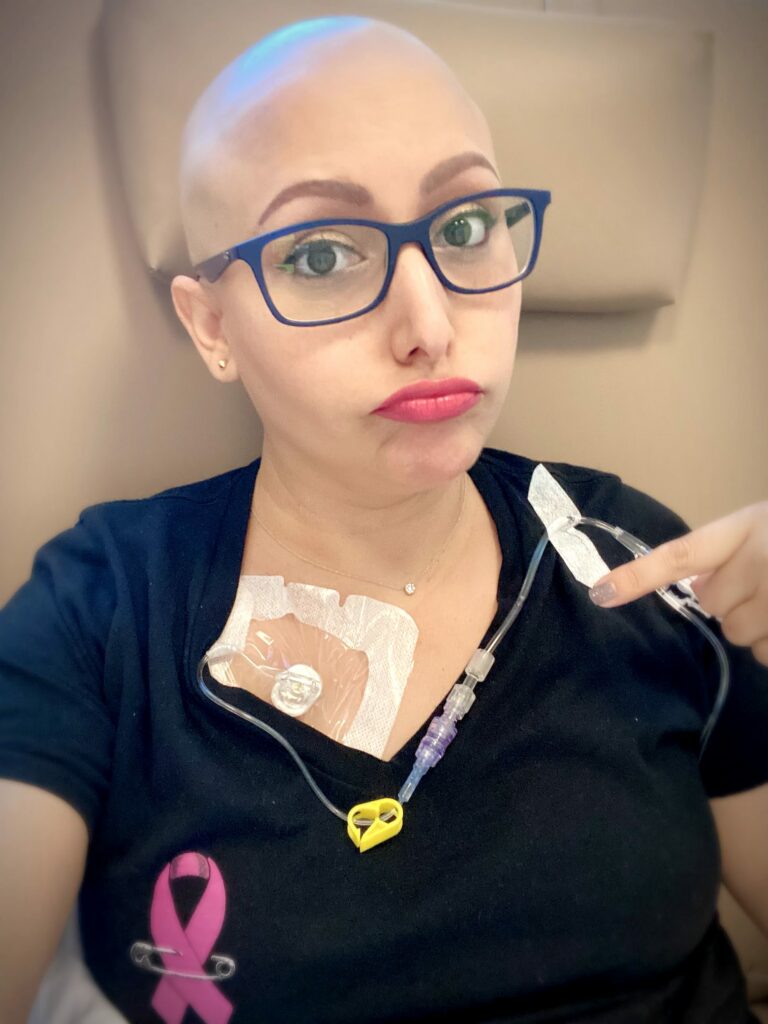
Time for Treatment
Next up, it was time to start chemo, Andaya-Gomez says the best word to describe this time was as a rollercoaster. “There are so many ups and downs and twisty turns along the way that sometimes you simply don’t know if you’re upside down or right-side up,” she says.
For her treatment, she had a port placed on her chest right above her breast to receive the chemotherapy infusions. “Having a port beat having an IV infusion on your arm,” she adds.
On her list of “good” experiences while receiving chemo, she lists “losing my hair.” This is where her attitude and humor come in, as Andaya-Gomez says, “I know that sounds bad and it certainly can trigger an emotional reaction so this one is also on the bad list. But loosing ALL body hair also meant not having to shave my legs, arms or bikini area for months. To be clear, I’ll take having to shave over having cancer and losing all my hair, but this little factoid is one of the ways I made lemonade out of the Chemo Limes I got.” She also notes that getting ready was also much quicker since she didn’t have to worry about getting her hair done. She discovered wigs and began to have fun with different looks. “The perspective gained on all things living and the importance of being present has been invaluable and surely nothing that I would have gained any other way,” she adds.
Now for the bad? Andaya-Gomez notes that “hearing, ‘You have cancer.’ Is one of the worst things anyone can hear.” In addition to the receiving the news, other items on her “bad” list include: “Having to adjust to a new normal that includes weekly and sometimes daily trips to the hospital. Plus, all the side effects from treatments including: bone pain, fatigue, hair loss, anemia, nausea and vomiting, neuropathy (numbness, tingling, and pain), skin and nail changes, chemo brain (memory loss and the inability to focus), no libido, and chemo induced menopause…these are just some of the ones I personally experienced,” she adds.
Other negative side effects she faced were “not recognizing the person in the mirror; having to live with a new level of uncertainty; and the fear of possible reoccurrence. They say the first year is the worst as it has the highest chance of re-occurrence and you’re not officially declared ‘Cancer Free’ until after 5 years of negative results,” adds Andaya-Gomez.
She then went through eight rounds of bi-weekly chemo for four months—in the middle of the pandemic. Four of these treatments were what they call “dose dense chemo, meaning each treatment equaled three sessions,” adds Andaya-Gomez. “They were intense to say the least and the bone pain that came with each treatment was practically unbearable. “After chemo, I had a month break (to allow my body to heal a bit) and then I had a lumpectomy surgery and removal of two lymph nodes (to check for possible cancer spread), which thankfully came back clean!”
Following surgery, she had another 4-week break before starting 20 rounds of radiation. And, radiation, she says, came with its own set of “odd-prep, a new routine, and additional symptoms. As far as set up, I now have six new ‘tattoos’ that look more like freckles than some piece of art on my body. Those little dots are markers and yes, they are permanent. I have three down my spine, one on either side of my body and one on my right breast. These markers are used as grid lines during each radiation session as you must be in the exact position for each treatment,” she notes. “No pressure.”
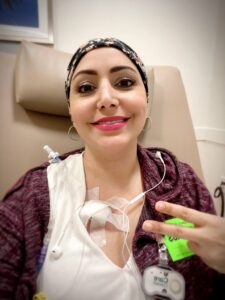
The first day of any treatment is the worst she says because you don’t know what to expect. “Nerves are high, and everything seems extra uncomfortable. Once I met the team—in my case five wonderful people—and got through the first session, I felt more at ease. I came into the radiation room hopeful and with a smile on my face knowing that this would be the last step in kicking cancer’s ass. I knew that I would be seeing my team, every day, Monday – Friday for the next 20 days, so I tried to quickly warm up to the idea that this would be my new normal.”
For the next seven months, her new routine consisted of daily or weekly hospital visits. Yet, through this whole experience, Andaya-Gomez was still working from home before heading to treatment and again after returning home. “I would get up and get ready for the day, sit at my desk and work from home until it was time to head to the hospital for treatment (chemo, radiation, doctor visits, lab work, etc.). My husband and 2-year-old son, while not allowed to enter the hospital due to the COVID-19 Pandemic, would drive me to the hospital for treatment and wait in the car for practically every single visit for seven months.”
The only time they didn’t wait outside was when she’d receive a dose of dense chemo and had to be in the hospital for 4-5 hours. “Many times, I felt too weak in the morning and even more so after treatment,” she adds. “Not having to deal with driving, and the crazy Miami traffic, and knowing that my support system was just outside, made a world of a difference.”
I felt as if I had been gut-punched, as if I had just fallen of off an emotional cliff. How could I be expected to go about my life as if nothing had happened?
Susette Andaya-Gomez Tweet
"When it Rains, it Pours"
As if getting a cancer diagnosis as the world was shut down, was not difficult enough, Andaya-Gomez soon had another hurdle to cross over.
“Not only was I now battling cancer during a global pandemic, but I had just found out that my husband had been let go from his job shortly after my diagnosis, but he had not told me right away as to not add another burden. After a few weeks, and after I had the first port placement surgery, he told me about his job loss. At that point it became clear that I would not be able to take medical leave.
However, having work was the only thing that felt normal, she notes “being able to work allowed me to still feel productive and in-control of some aspect of my life. I was determined to fight this fight with as much passion, dignity, and grace as I knew how and so I had to learn new ways to balance my work and now frantic personal life. However, as my treatments intensified and my symptoms got stronger, I started to realize I may need to let go of something and possibly take a medical leave to focus on my health.
“Despite all the jabs that the universe seemed to be throwing my way, I decided to look at the bright side. If there was ever a time to be positive, it was now. The bright side for me during this time was that even though I was now battling cancer during a global pandemic and my husband had just been let go from work, this would mean that he could stay home to help take care of our son who would now be taken out of daycare due to the pandemic and my compromised immune system. Plus, he could help take care of me, too. This is when I started to really lean into the idea of perspective. I quickly taught myself that perspective was going to become my new best friend.”
Andaya-Gomez then began to coach herself through positive thinking. “Every time I felt even the slightest discomfort with any treatment, I told myself the following: ‘it’s all mind over matter, you can do this, this too shall pass, remember that this is all part of your warrior training.’ Thinking these thoughts gave me strength and comfort and before I knew it, that session was done.”
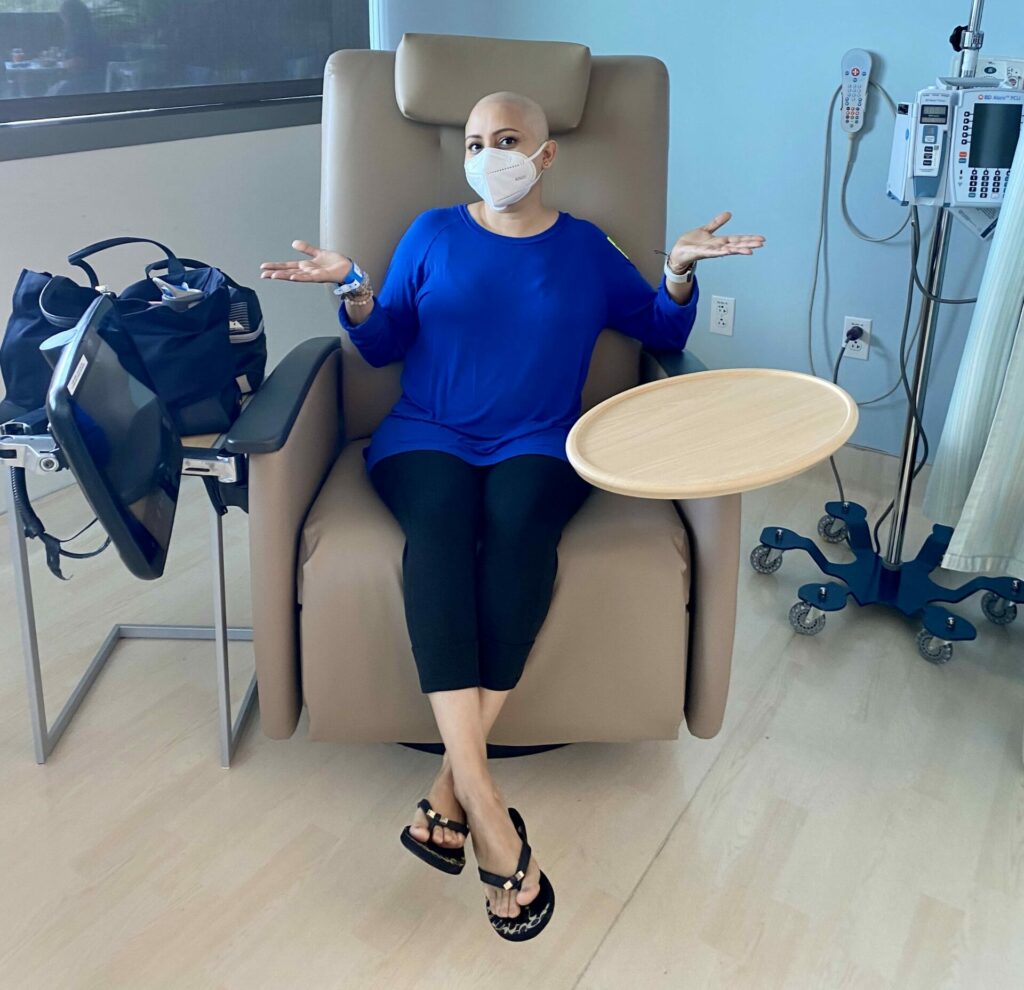
Time to Ask for Help
“As time passed, and I started radiation treatments, my symptoms worsened. All the symptoms after months of treatment had compounded and it was now undisputable, that I had to take a medical leave of absence. I had fought to keep things as normal as possible, but I was now aware that I was a patient. I finally put myself first and forgave myself for not always being capable of being wonder woman. This is when I learned that ‘it’s OK not to be OK.’ I reminded myself of all the mantras I had been using when the days got hard or when symptoms and treatments seemed unbearable and so I put in for a medical leave.”
During this time, Andaya-Gomez adds that having people to support you emotionally, spiritually, or financially can make a huge difference in the success of your treatment. She notes that if you’re reading this and have someone going through cancer treatment, just ask them how can you help.
“In addition to my husband, I was also very lucky to have a supportive work family. I also had a strong group of soul sisters that consisted of seven amazing women, who are spread throughout the country—some of which, I’ve known for over 25 years. And while not all are near, you would never know it because their support was so strong and present that you’d be sure they lived down the street. These women, my sisters, gifted me their time and their love. They also provided me emotional, spiritual, and financial support, which made my life easier and the tough journey of fighting cancer much more bearable.”
Life After Treatment
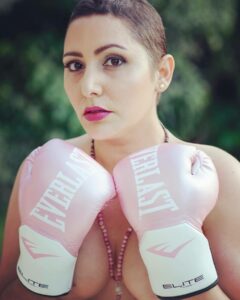
“I thought I would feel elated and happy that it was all behind me now. But instead, I felt deeply emotional and scared. After months of lab work, doctor visits, tests, and procedures to eradicate cancer, I was told I was free to go. I would not be seeing my radiation oncologist for another three months and my medical oncologist for six months. There would be no post-treatment bloodwork to let me know how I was doing now. No scheduled visit with a therapist to see how I felt about it all. My eyes flooded with tears. I excused myself and started to walk out of the hospital when the sadness took over. I had to find the nearest seat, take several deep breaths, and quickly try to make sense of it all. I felt as if I had been gut-punched, as if I had just fallen of off an emotional cliff. How could I be expected to go about my life as if nothing had happened? I still had significant symptoms—severe fatigue, memory loss, inability to focus, intense pain on my right arm, a weird bump on my right foot that had developed during chemo and that no doctor could figure out, but would not dare touch since my immune system was so low due to chemo.
“The list of post treatment symptoms went on. It’s as if all the poison in the world that my body had endured was now exiting my body but some of it did not know how or want to leave.”
After treatment, she remained on medical leave for the time that insurance will allowed—up to 12 weeks. She took this time to treat all the side effects as best as she knew how. “Some days required more doctor visits, x-rays, MRI’s, acupuncture, oncology massages and some of it required peace a quiet. Time to breath, read a book and give it all to God and the universe and have faith that all these techniques would come together and eventually allow me to really feel better,” she said.
Going through Cancer Treatment as a Mom
Mom duties don’t go away just because you feel sick, and cancer is an entire other ballgame. With a 2-year-old at home during a pandemic, plus facing grueling cancer treatment, Andaya-Gomez says this was “Hard! While I was very lucky to have my husband stay at home and take care of me and our son, it was still hard because little boys have a lot of energy and like most small children, require a lot of attention.”
Sharing the news with a 2-year-old is not something moms expect to do, and Andaya-Gomez says that for her, she kept it simple. She would tell him things like, “Mommy is going to the hospital” and “Mommy has a new hair style” to help him understand the new changes.
“Once my hair completely fell off, I thought he would have a stronger reaction, but he was so sweet and said “Mommy, I like your hairstyle,” “Mommy your hairstyle is beautiful,” which would completely melt my heart and immediately made me feel better. Having Sebastian tell me such sweet things, really helped me embrace my new bald head look.”
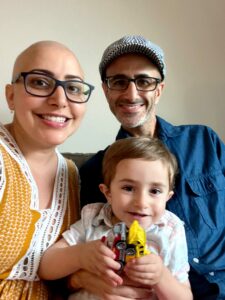
She adds, “I have to give a gold medal and the MVP award to my husband who, during this time, not only took care of me, but also took 100 percent charge of child care, cooking, cleaning, teaching our son lessons, driving me to and from medical appointments, and became my barista (what would we do without a great cup of coffee?) and did all-the-things and then some to take care of our family.”
Getting the "All Clear"
“I cannot put into words the sense of relief I felt,” she says. First, “I hugged my husband and called my father.”
However, medically, after the “all clear” she will still have follow-up appointments every six months for the next five years. “Personally, I plan to continue a strict cancer killing diet that consists of no sugars, no processed foods and lots of organic meats and vegetables,” she adds.
“Having survived a cancer diagnosis has granted me a newfound perspective. While there are still a few surgeries in my future, I have a new appreciation for life and for the importance of living in the moment that I would not have acquired any other way. Ironically, life now seems sweeter than before as I no longer take anything for granted. I’ve already become a walking billboard for cancer awareness. I speak to every woman I encounter about the importance of early detection and how to do a self-checkup at home. I’d like to give back in some bigger way so I’m in the process of finding an organization I can partner with to volunteer my time and help move this important cause forward,” she adds.
Advice Following a Cancer Diagnosis
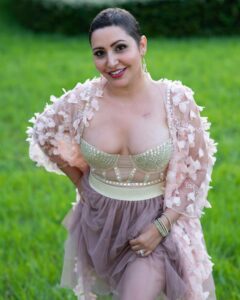
“Stay positive. Follow the medical protocol and take it day by day. You must have faith that you will be ok and must be able to see yourself having beat cancer,” says Andaya-Gomez. “In my hearts of hearts, I know there’s a direct link between keeping a positive attitude and how successful your treatment will be. For me, it was a mind over matter thing. I never saw myself dying. Instead, I was focused on what the next steps were and always pictured myself overcoming my diagnosis.”
If a friend or family member has recently been diagnosed, Andaya-Gomez suggests you, “Ask, how you can help. Everyone’s needs will be different.” She adds that going through this experience, she met many women who have been left by their partners during their treatment.
“Offer to buy them a meal, make them food that can be frozen or refrigerated for later use, send them take out, send them groceries, offer to do some house chores for them, send them a care package, send them a thinking of you card with well wishes, text or call them. Above all, stay in touch,” she says.
Don’t forget to “Let them know how important they are to you and offer to help in whatever way you can. I was lucky enough to have amazing people show up for me when I needed them the most, but I’m aware that not everyone is as lucky. Feeling loved and appreciated are a big part of the healing process. No one wants to feel alone, and cancer treatment can really mess with your head and your emotions.”
I have a new appreciation for life and for the importance of living in the moment that I would not have acquired any other way. Ironically, life now seems sweeter than before.
Surette Andaya-Gomez Tweet
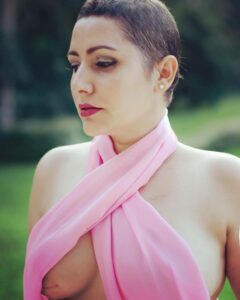
If you’re thinking of sending a loved one a care package as they go through treatment, Andaya-Gomez shared some suggestions of what you can include: Organic hand and/or body lotion (skin gets very dry during chemo); a comfy hoodie or zip up sweater (great to keep warm and to use during chemo infusions); soft socks; slippers soft, comfy PJ’s; organic lip balm; activity books— crosswords or a coloring book with colors; eye drops; organic soy candles (to relax the mind); books; organic baked goods; and flowers.
She adds that the most important thing you can do is, “Show up emotionally. There really are no words to express the love and gratitude I felt each time a friend reached out. Know that there is no wrong way to show up for a loved one. What’s important is that you SHOW UP.”


